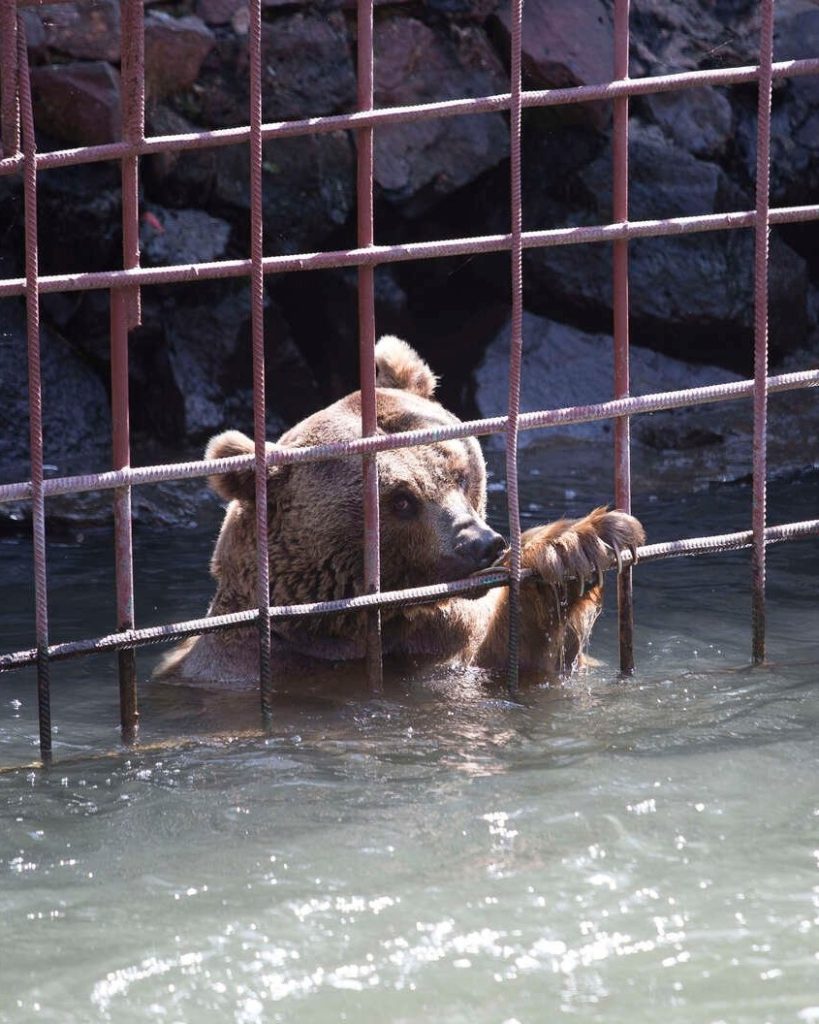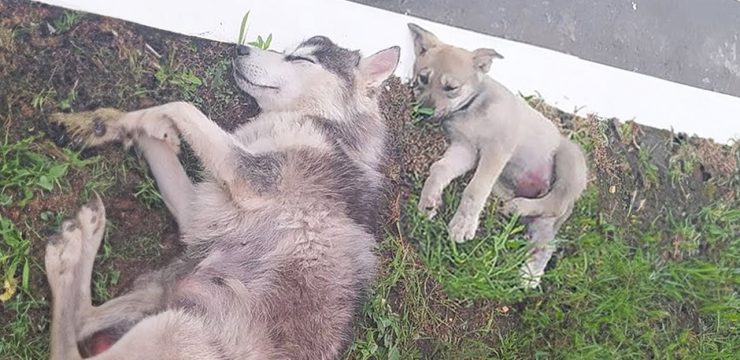Bears are some of the most awe-inspiring animals on the planet. With their immense strength, intelligence, and quiet dignity, they belong in the wild — not behind bars, not in roadside cages, and certainly not as sideshow attractions. And once you hear the story of two brown bears named Misha and Dasha, you’ll likely feel the same way.
For ten painful years, Misha and Dasha were trapped in a small, rusting cage outside a restaurant in Armenia. Day in and day out, they endured a life devoid of stimulation, space, and care. The cramped cage, made of metal bars, left them barely enough room to move. With nothing to engage their minds or satisfy their natural instincts, the bears developed repetitive behaviors, often seen in animals suffering from severe distress and depression. They would pace endlessly in tight circles, climb the bars out of sheer desperation, and sometimes even bash their heads against the iron walls. This wasn’t living — it was existing in silent torment, all for the entertainment of tourists who barely gave a second thought to the pain behind those heavy eyes.

As if the conditions weren’t already horrific, the cage was placed dangerously close to a riverbank. Every year, during the rainy season, the river would rise, threatening the lives of the two helpless animals. One year, that threat became terrifyingly real. The river overflowed, and the rising waters surrounded their tiny enclosure. Trapped behind thick metal bars, the bears came within inches of drowning. It was only thanks to the quick intervention of rescuers that they survived at all.
“A few years back, the river flooded, and the bears almost drowned,” recalled Lis Key, the PR and communications manager for International Animal Rescue (IAR). “The rescue team had to cut through the cages to release them, so they must have been trapped when the river flooded and in serious danger of drowning.”
For years, IAR, in collaboration with the Foundation for the Preservation of Wildlife and Cultural Assets (FPWC), fought tirelessly to secure the release of Misha and Dasha. It wasn’t easy. Convincing the restaurant’s owners to part with the bears was a long, difficult process, marked by resistance and red tape. But the rescuers never gave up. Their determination was unwavering, and eventually, their persistence paid off.
Armed with tools and a sense of mission, the rescue team finally arrived to liberate the bears. They carefully cut through the cold, corroded metal that had defined Misha and Dasha’s world for a decade. Once the bears were freed, they were gently sedated to minimize stress and transported to a mountain sanctuary — a safe haven designed for rehabilitation and healing.
At the sanctuary, Misha and Dasha were introduced to a life they had never known. No more cages, no more crowds, no more fear. They were finally free to roam the forested grounds, explore nature, and behave like real bears. The transformation was almost immediate. Their eyes grew brighter. Their movements became more natural. The mental and emotional weight that had hung over them began to lift.
Then, something incredible happened. As winter approached, Misha and Dasha did something that bears in the wild do every year — they found a cave and began to hibernate. It was their first true winter sleep, undisturbed and safe. When spring came and they emerged from the den, sanctuary staff were greeted with a heartwarming surprise: Dasha had given birth to two healthy cubs.
No one had realized she was pregnant at the time of her rescue. “She received all necessary care after being rescued — enough fruits, veggies, nuts, and honey to gain weight and fat before hibernation,” said Vicky Mkrtchyan, the environmental projects coordinator for FPWC. “But nobody guessed her good appetite was a result of pregnancy.”
From a bear who once lived behind iron bars in misery, Dasha had become a fiercely protective and nurturing mother. In the safety of the sanctuary, she cared for her cubs with instinct and love. Her transformation was nothing short of astonishing. Once a symbol of cruelty and confinement, she now embodied resilience, freedom, and the power of maternal care.
“It was already uplifting to see Dasha freed from the barren cage by the river and start to take an interest in life and in her surroundings,” Mkrtchyan added. “Now, seeing her with her two little cubs is simply beautiful. It is so moving to reflect on her miserable life behind bars and then look at her now — a natural mother caring for her cubs, protecting them fiercely from the outside world.”
Misha and Dasha’s journey from captivity to freedom is a powerful reminder of what animals endure when they are treated as entertainment instead of living beings. Their story speaks to the cruelty of animal captivity and the moral responsibility we share to protect those who cannot speak for themselves. It’s also a testament to the tireless work of organizations like IAR and FPWC, whose passion and persistence gave these bears a second chance at life.
Today, Dasha and her cubs are thriving. They spend their days exploring the sanctuary, climbing trees, foraging for food, and doing all the things that bears are meant to do. Misha, too, is embracing his new life, finally free to live in peace and dignity. Thanks to the people who never gave up on them, these bears will never again face hunger, fear, or isolation.
Their incredible story is more than just a rescue — it’s a victory for compassion, perseverance, and hope. And it serves as a call to action: no animal deserves to live in chains, and we all have a role to play in ending this kind of suffering for good.
If this story moved you, please consider sharing it to help raise awareness about the plight of animals in captivity. Together, we can be the voice they need — and help ensure that more animals, like Misha and Dasha, get the freedom and love they deserve.





